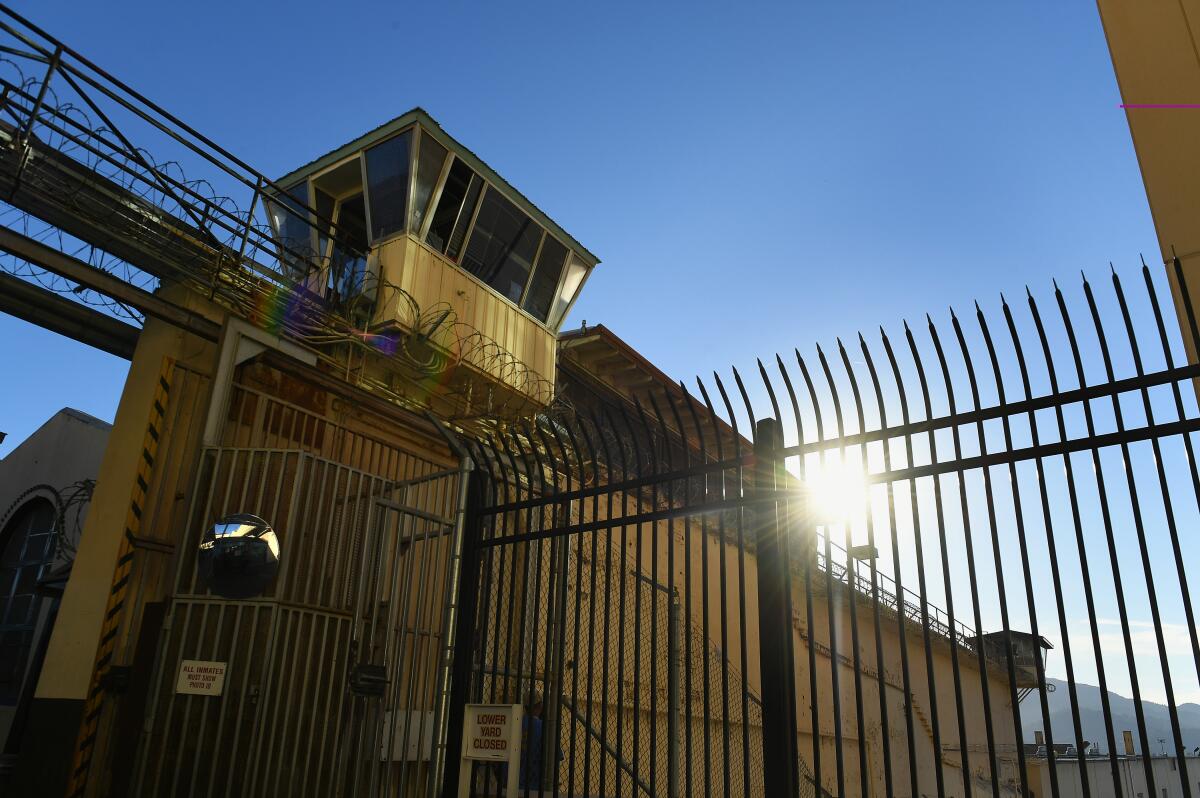
When California voters adopted the “three strikes” law in 1994, they accelerated a chain of events that ultimately led to unconstitutional state prison overcrowding and a federal court order to release 46,000 people.
As the 30th anniversary of the vote approaches, three strikes is back on the ballot in two unexpected ways.
The race for Los Angeles County district attorney will likely determine whether a challenge to the law will be heard by the state Supreme Court, or dropped. And Proposition 36, if it passes, would allow two low-level misdemeanors, theft and drug possession, to be treated like third strikes and turned into felonies.
Without necessarily realizing it, voters are now deciding whether to double down on three strikes, and in so doing whether to saddle themselves with steeper jail and prison costs and a larger incarceration footprint in much the same way they currently are paying a high price for their three-decade-old vote.
Three strikes laws, as in the baseball rule of “three strikes and you’re out,” target repeat offenders with extra punishment. California’s version was adopted twice, first by the Legislature on March 7, 1994, and by voters later that year.
The law doubles the sentence of anyone convicted of a second serious or violent felony. A third conviction results in a sentence of 25 years to life.
In the law’s original language, the third conviction could be for any crime, including a nonviolent misdemeanor, and that provision allowed the notorious 25-to-life sentence for Jerry DeWayne Williams for stealing a slice of pizza from children at the Redondo Beach Pier.
Williams was released early when a judge reduced his sentence, but the episode inspired a 2012 ballot measure requiring the third strike to be a serious felony like the first two.
When Los Angeles County Dist. Atty. George Gascón was elected in 2020, he instructed his prosecutors not to seek second or third strike sentences, reasoning that punishment for the underlying crime should be sufficient to hold perpetrators accountable.
The prosecutors’ union — the Assn. of Deputy District Attorneys — sued Gascón, alleging that the three strikes law is not discretionary because it says that prosecutors shall — not may — “plead and prove” prior strikes. Lower courts agreed.
The union’s legal team included former federal prosecutor Nathan Hochman, who is now running to unseat Gascón in the Nov. 5 election.
The state Supreme Court has taken the case to decide whether the interpretation violates constitutionally required separation of powers and prosecutorial discretion. Obviously, three strikes critics argue, prosecutors can’t be required to “prove” their cases, because that would mean they’re always legally obligated to win — an outcome that is not within their control. So if the language cannot really require them to “prove” their case, it also can’t require them to “plead” — to seek sentence enhancements under the three strikes law.
But after two years, arguments have not yet been scheduled. And polling shows Hochman with a large lead. If he wins, he told The Times’ editorial board, he will drop the Supreme Court appeal and leave intact the ruling that the three strikes law mandates that prosecutors seek the longest possible sentence.
That outcome would strip voters in each county of the ability to elect a district attorney — such as Gascón — who believes justice and safety would be best served by less onerous prison terms.
Proposition 36 would add the two mini-three-strikes provisions, both of which turn a third misdemeanor into a felony, although not one punishable by anything approaching a 25-to-life term.
A person with two previous misdemeanor drug convictions could be charged on a third offense with a “treatment mandated felony.” The person could choose to complete a court-approved drug treatment program and then have the conviction dismissed, or be sentenced to jail or prison.
Under a different Proposition 36 provision, a person with two prior petty theft convictions could be charged for a third offense with a felony and sent to jail. Stealing a slice of pizza would once again subject an offender to the possibility of a multi-year sentence.
In fact, drug and theft misdemeanors already carry jail time, but in counties with overcrowded jails such as Los Angeles, police, prosecutors and jailers reserve their efforts for more dangerous offenders.
That’s a smarter use of resources. County jails today are where state prisons were after three strikes and other tough-on-crime measures led to unconstitutional crowding. After federal judges ordered prison releases, California sent lower-level felons to local jails instead of state prisons, and counties were expected to make room in the jails by finding creative, safe and effective alternatives to locking up their nonviolent misdemeanor populations.
Progress has been slow. Some local officials in city and county governments and in law enforcement long for the days when they could send convicted felons to state prisons and wash local hands of the costs and responsibilities of housing them and altering their future behavior. Proposition 36 does permit some repeat offenders to be sent to prison, but most will merely add to county jail populations, and drain local budgets of resources to find alternatives to incarceration.